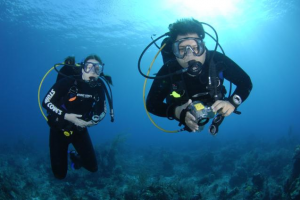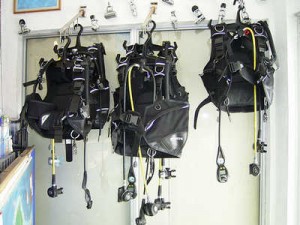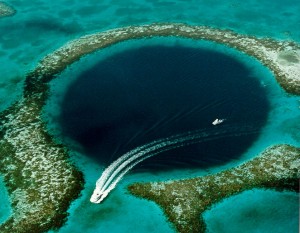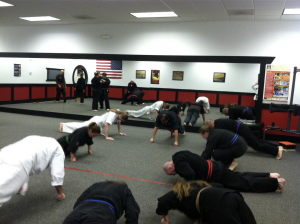One of the hardest things to deal with when dieting is that feeling of still being hungry. I’m convinced that this is much of the reason why people fail while dieting – we get used to that “full” feeling after a meal, and while we are on a diet we may not get as “full” anymore. This gives us the feeling that we are being “deprived” of something, which makes dieting even harder and makes some people give up completely. The problem isn’t that we aren’t getting enough food, it’s that we are mentally conditioned to expect that “full” feeling after every meal. This may come as a surprise, but that “being full” feeling is actually a warning that we are over-eating!
 The average human stomach is the size of your closed fist, or 45 ml. This means that you should only need 45 ml of food in order to fill it up. It can however expand to hold up to a quart or more of food. For most of us, this expansion happens at least 3 times a day! Think about it: Look at the size of the portion of food you get from a restaurant – it’s HUGE! A Subway sandwich – like that $5 foot-long that you jammed into your face for lunch today – is at least 3 times the size of your stomach! Your stomach had to stretch itself to 3 times it’s size in order to accommodate that giant torpedo of meat and cheese, and that was just lunch! For most folks dinner is even bigger and usually entails heading down to the Golden Coral or Long Horn Feed Trough and gnawing on the Ole’ 96’er, stretching that spare tire out as far as it goes!
The average human stomach is the size of your closed fist, or 45 ml. This means that you should only need 45 ml of food in order to fill it up. It can however expand to hold up to a quart or more of food. For most of us, this expansion happens at least 3 times a day! Think about it: Look at the size of the portion of food you get from a restaurant – it’s HUGE! A Subway sandwich – like that $5 foot-long that you jammed into your face for lunch today – is at least 3 times the size of your stomach! Your stomach had to stretch itself to 3 times it’s size in order to accommodate that giant torpedo of meat and cheese, and that was just lunch! For most folks dinner is even bigger and usually entails heading down to the Golden Coral or Long Horn Feed Trough and gnawing on the Ole’ 96’er, stretching that spare tire out as far as it goes!
America loves to eat, and it’s pretty common to get oversized meal portions everywhere you go. This is probably so that we feel like we are getting “our money’s worth” while dining out. Unfortunately all we are really getting is stretched out stomachs, leading to that “I’m not full yet” feeling when we try to do the right thing and watch what we eat! The good news is that this is only a temporary problem. Your stomach should shrink back to some semblance of normal size in a week or so of eating the correct size meal portions. After that, a properly portioned meal should be very satisfying. Yes, it’s going to suck for a while until it does, but be patient and know that you aren’t depriving yourself of anything when you eat right. In fact, you are re-gaining the natural shape and size of a major organ that has been abused for a VERY long time.
Remember: You should only eat until you are not hungry. It’s not natural or normal for you to feel FULL all the time.




 I’m going to ramble on a bit here. Last year wasn’t a huge year for diving. It seemed like we were always busy doing other things. We did visit
I’m going to ramble on a bit here. Last year wasn’t a huge year for diving. It seemed like we were always busy doing other things. We did visit 
 Last night 8 brave souls joined me in my nightly Burpee Tabata suffering session at
Last night 8 brave souls joined me in my nightly Burpee Tabata suffering session at  I really don’t know where this article is going, so bear with me here as I attempt to capture what is going on inside my head. As I’m writing this, I’m watching the Shuttle Discovery pull up to the cranes that will eventually lift it off it’s 747 ferry aircraft and transport it to it’s new home – the Udvar Hazy Annex of the Smithsonian Air & Space Museum. The shuttle program has ended some time ago, but I guess it’s end didn’t seem real until just now. I really didn’t want to be one of these sappy nostalgic people who are celebrating the remarkably long and mostly successful shuttle program, but it seems like I can’t ignore it.
I really don’t know where this article is going, so bear with me here as I attempt to capture what is going on inside my head. As I’m writing this, I’m watching the Shuttle Discovery pull up to the cranes that will eventually lift it off it’s 747 ferry aircraft and transport it to it’s new home – the Udvar Hazy Annex of the Smithsonian Air & Space Museum. The shuttle program has ended some time ago, but I guess it’s end didn’t seem real until just now. I really didn’t want to be one of these sappy nostalgic people who are celebrating the remarkably long and mostly successful shuttle program, but it seems like I can’t ignore it.